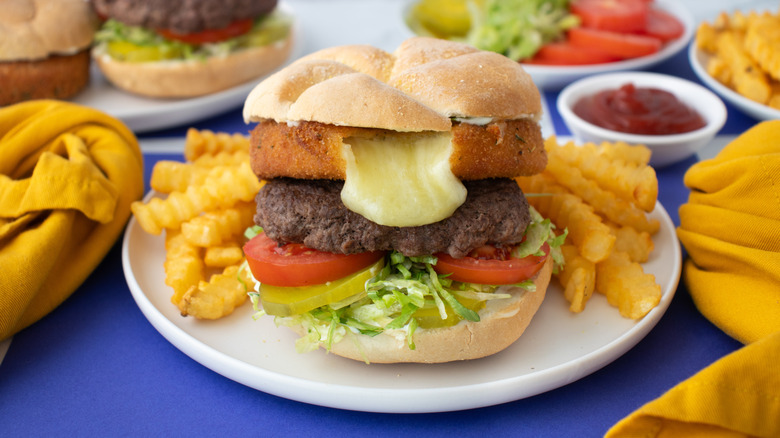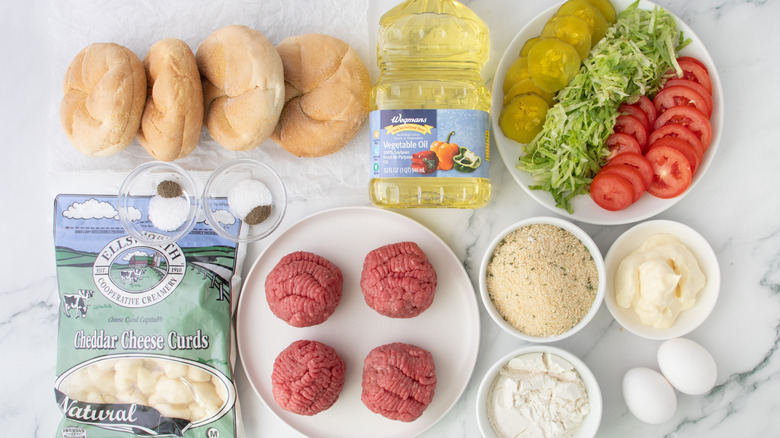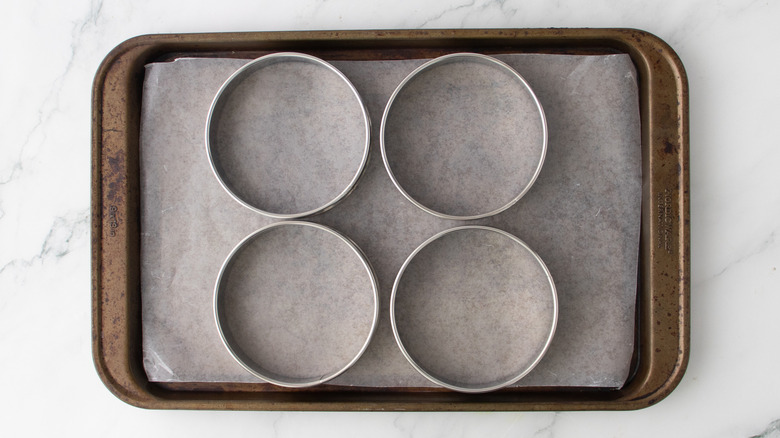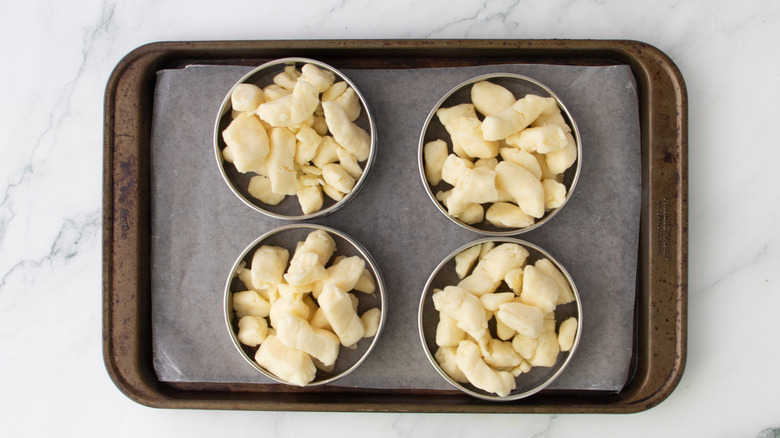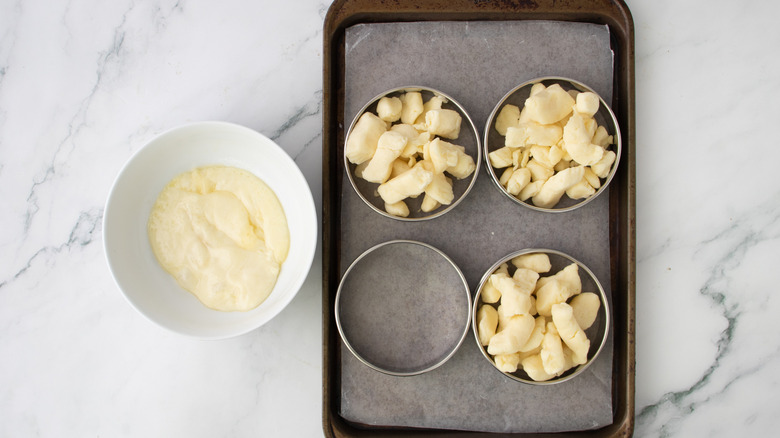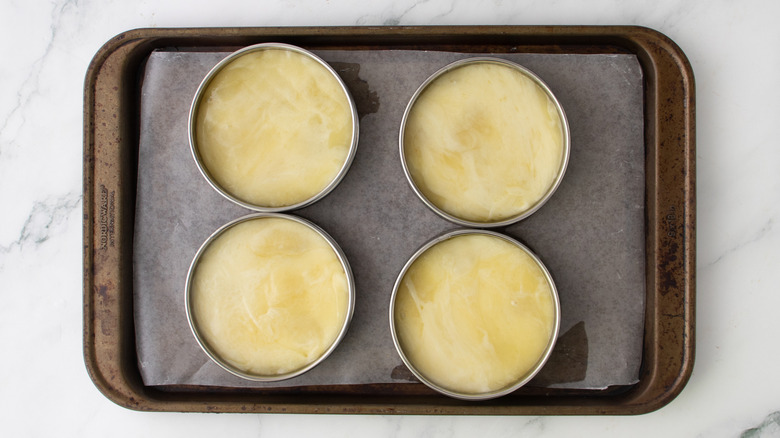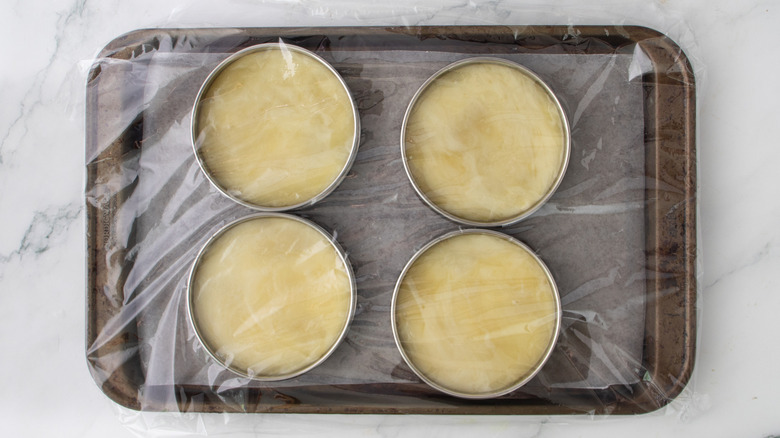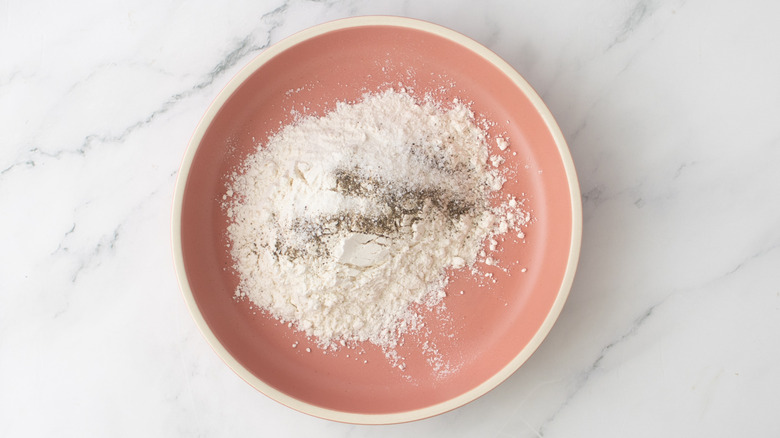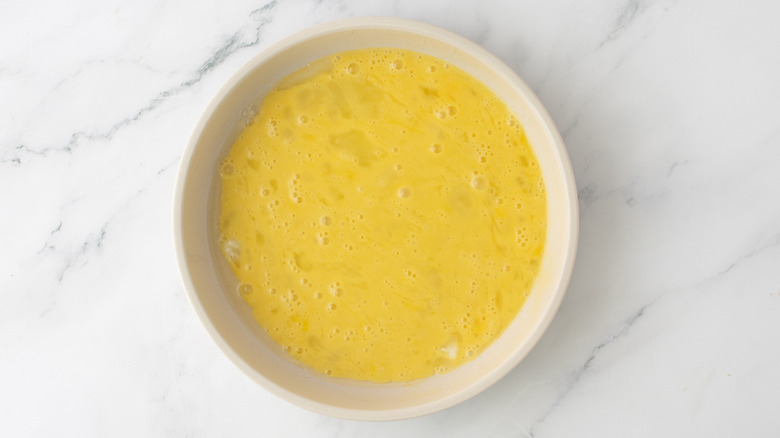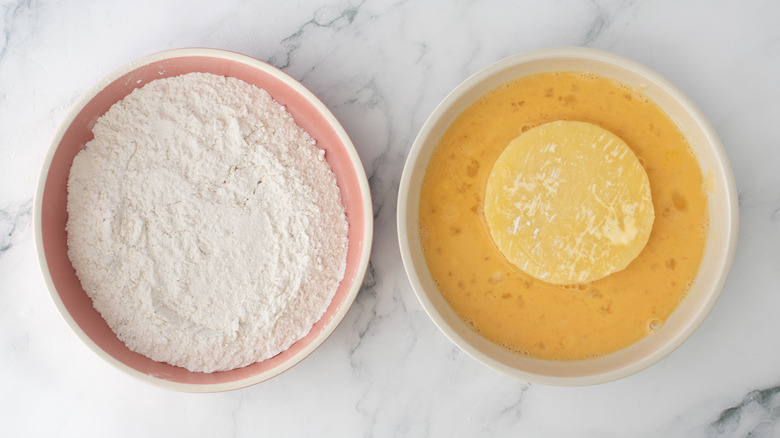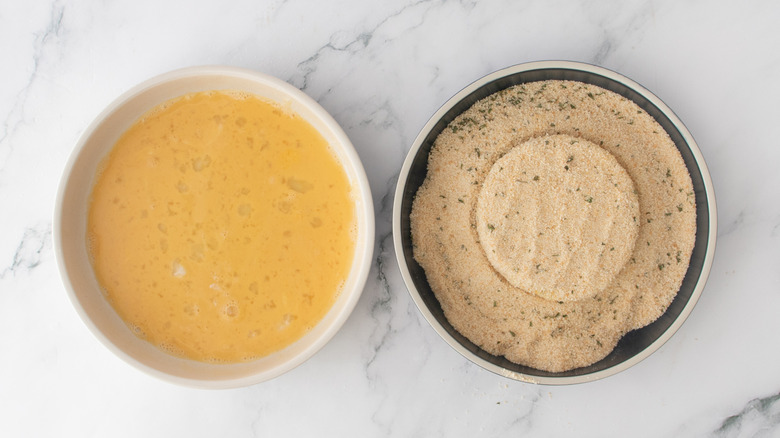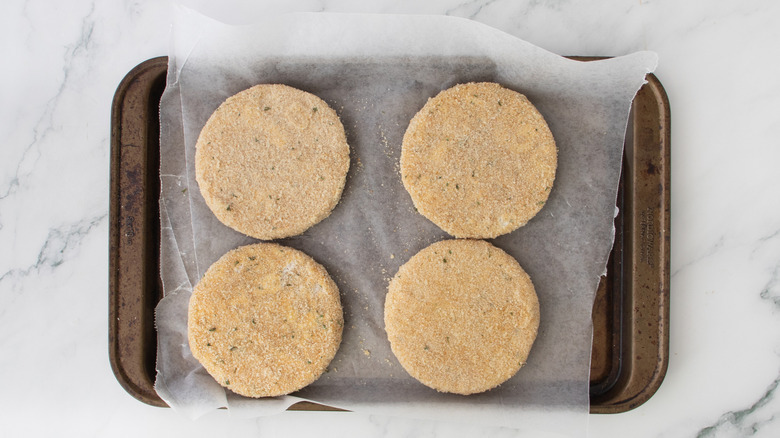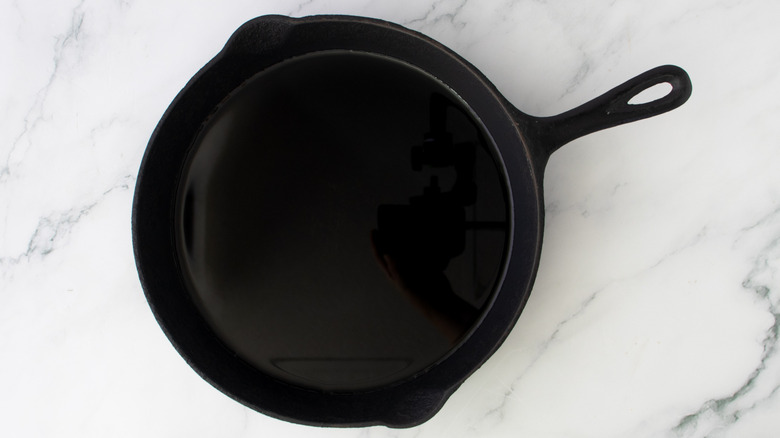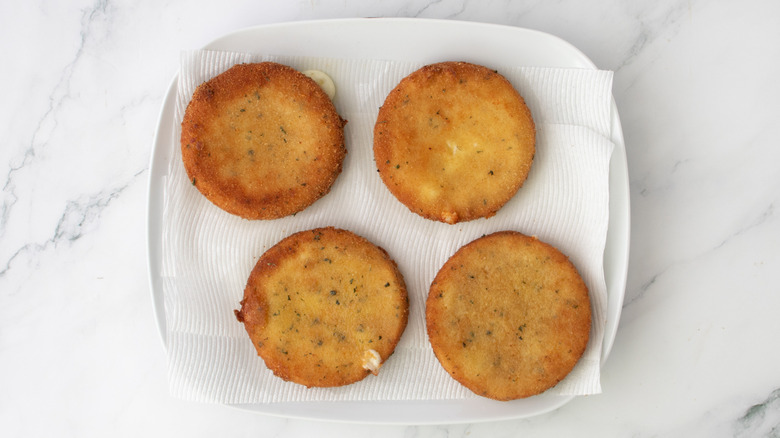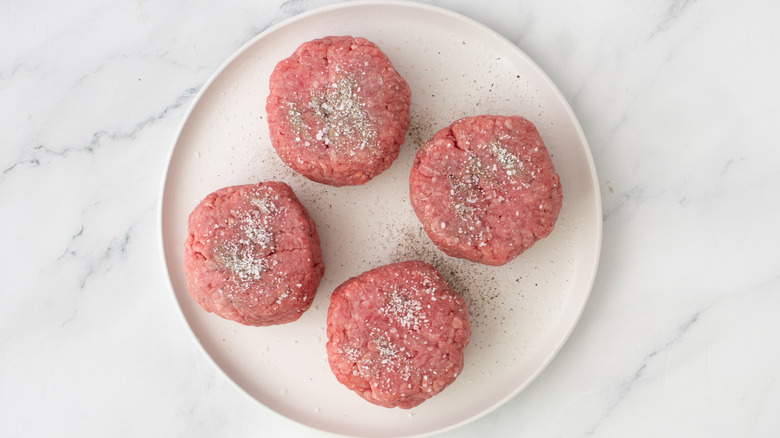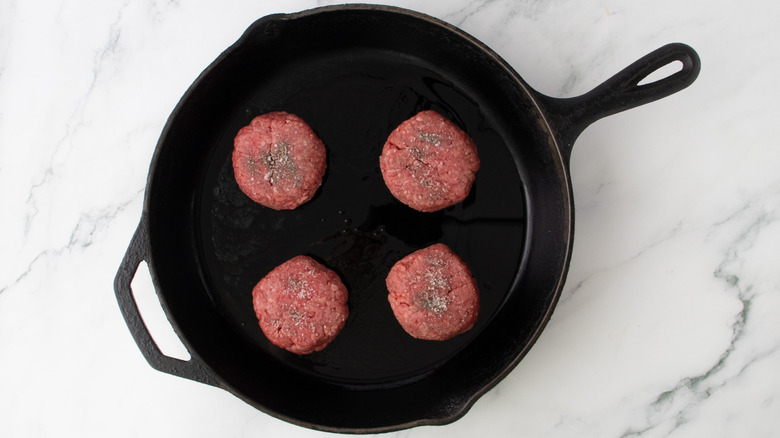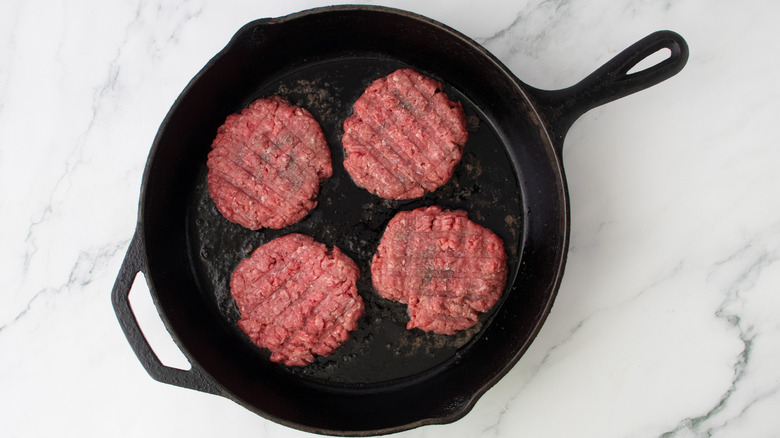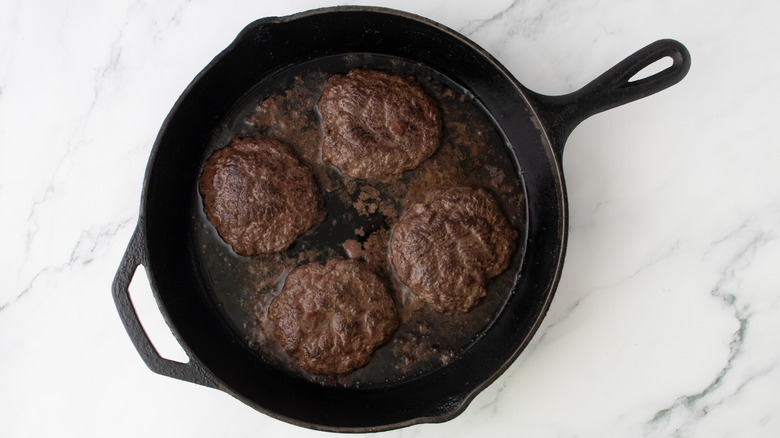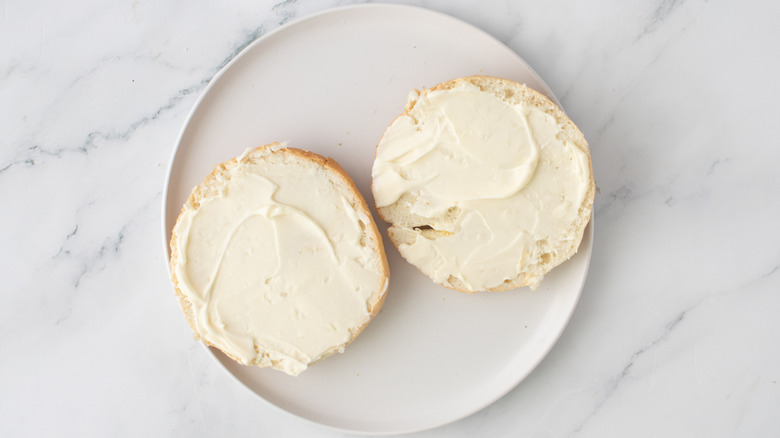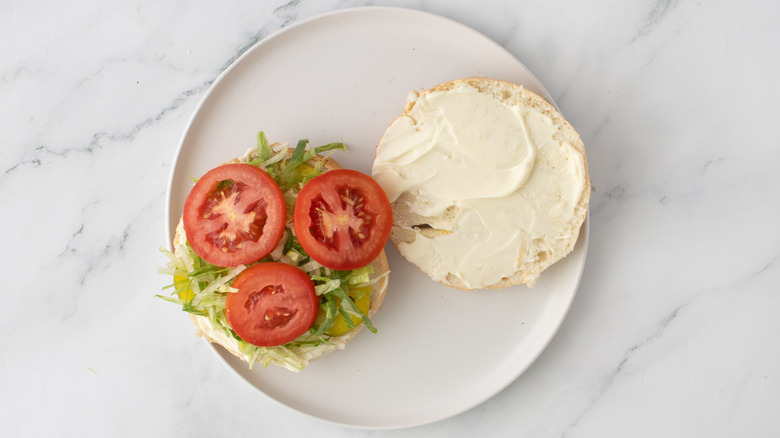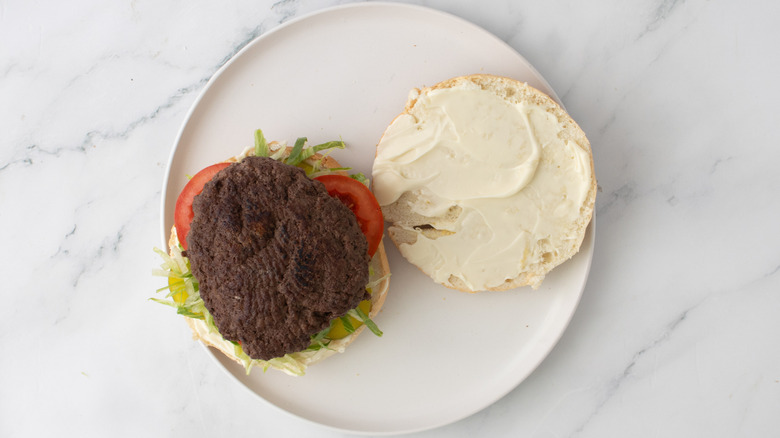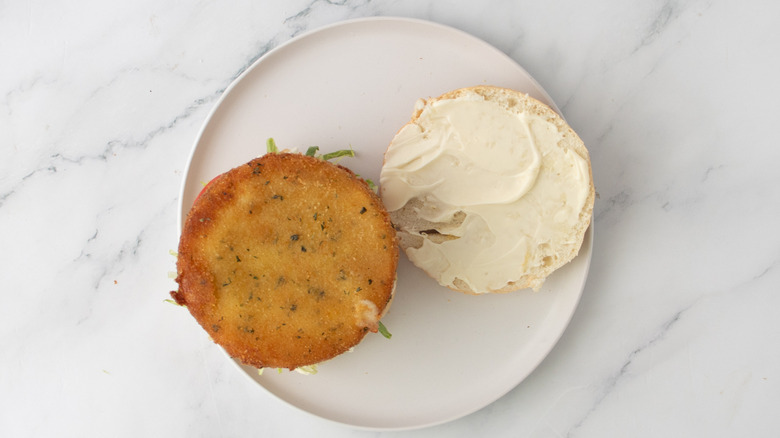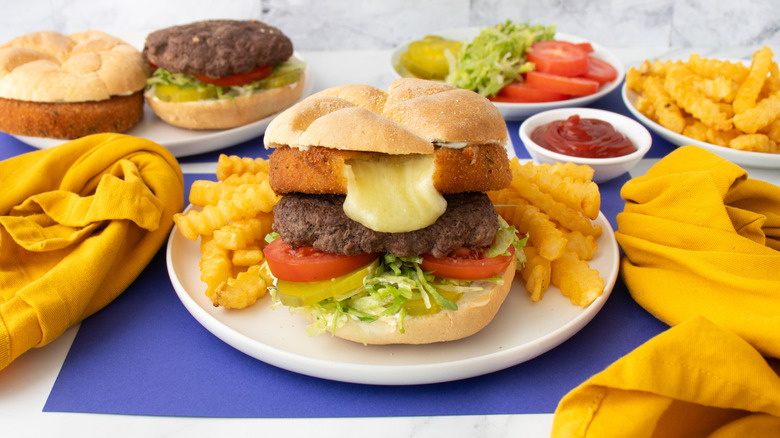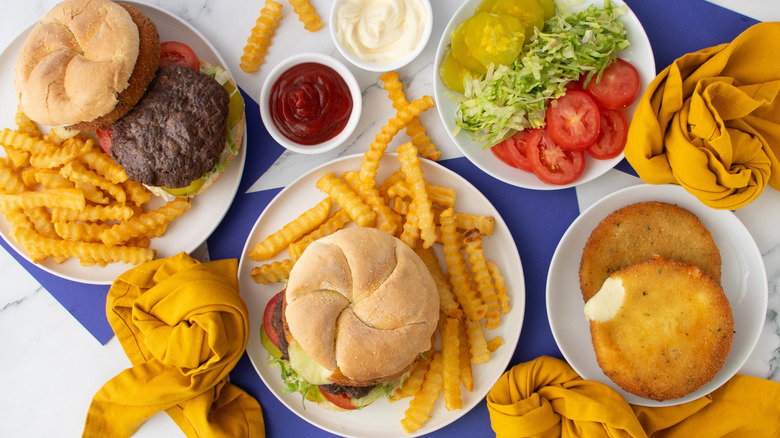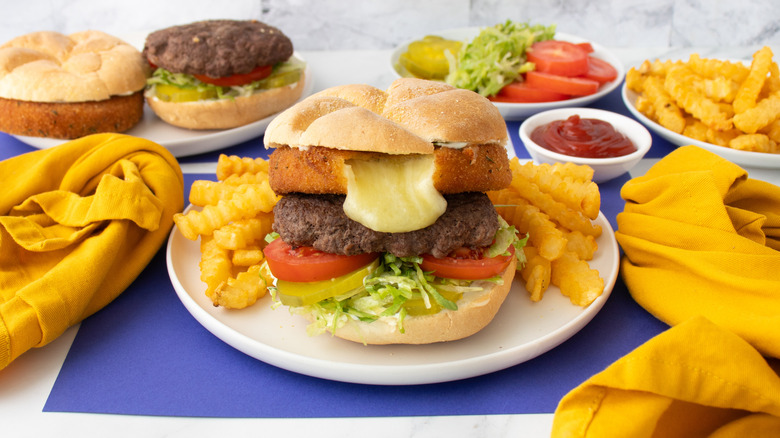Copycat Culver's 'CurderBurger' Recipe
We may receive a commission on purchases made from links.
Whether it's a perfectly cooked filet or a fast-food burger, a copycat recipe comes in handy when you fall in love with a restaurant dish and want the fun challenge of recreating it in your own kitchen. Mashed recipe developer Patterson Watkins took on one of fast food's more singular creations with this copycat Culver's CurderBurger recipe. This mash-up of a traditional burger patty and a thick disc of fried cheese curds is one hearty and decadent sandwich, and Watkins had a lot of fun with it. "It is absolutely ridiculous, delicious and fun, but ridiculous," Watkins comments.
Cheese curds, which are basically bits of unaged cheese, have a mild salty flavor and a somewhat squeaky and rubbery texture before they're melted, and they're especially popular in the Midwest and in Canada (where they feature in poutine). Watkins shares, "I live on the East Coast, so cheese curds are a wee bit of a luxury/special treat. I don't get that many opportunities to play with 'em, so this copycat recipe was especially cool to develop." Indeed, the bite-sized bits of curdled milk can be used in plenty of ways, and in these fried patties, they have a melty-oozy interior and a perfectly crispy exterior that puts an extra-cheesy spin on your average cheeseburger. As Watkins observes, "You gotta really love cheese to appreciate this burger. Each burger gets 4 ounces of cheese curds and 4 ounces of burger... prepare yourself."
Gather the ingredients for these copycat Culver's CurderBurgers
For the curd burger component, you'll need cheddar cheese curds, all-purpose flour, salt, black pepper, eggs (beaten), Italian-style seasoned breadcrumbs, and vegetable oil (for frying). Then, for the hamburger, get ground beef (divided into four even balls), salt, black pepper, and vegetable oil. Finally, to assemble the CurderBurgers, you'll need Kaiser-style burger buns (split), mayonnaise, dill pickle chips, iceberg lettuce (shredded), and Roma tomatoes (sliced).
Step 1: Prep the ring molds
Place 4 (4-inch) ring molds on a wax paper-lined baking sheet.
Step 2: Portion the cheese
Divide the cheese curds into 4 (4-ounce) portions.
Step 3: Melt the cheese
Working with one portion at a time, place the curds in a microwave-safe bowl, and warm in 30-second intervals until the curds are mostly melted.
Step 4: Add the cheese to the molds
Pour or spoon the melted curds into one of the molds and spread them out evenly. Repeat with the remaining curds.
Step 5: Cover and freeze the molds
Once all the molds are filled, cover the baking sheet with plastic wrap, and freeze for 1 hour to firm.
Step 6: Prep the flour
While the curds are firming, set up your breading station by placing the flour in a shallow bowl. Season the flour with salt and pepper.
Step 7: Prep the eggs for breading
Place the eggs in another shallow bowl.
Step 8: Prep the breadcrumbs
Place the seasoned breadcrumbs in a third shallow bowl.
Step 9: Coat the cheese molds with flour
Remove the curd patties from the molds and, working in batches, coat them in the seasoned flour, shaking off any excess.
Step 10: Dip the patties in egg
Dip the curds into the beaten egg, letting any excess drip off.
Step 11: Bread the cheese patties
Coat the curds in the breadcrumbs, using your hands to press and adhere the crumbs. Repeat the breading process a second time for each curd patty (double-breading each).
Step 12: Set the patties aside
Once all the curd patties have been breaded, set them aside.
Step 13: Heat the oil in skillet
Fill a large skillet ⅓ full with oil and bring it to 350 F to 375 F over medium-high heat.
Step 14: Fry the curd patties
Once hot, work in batches to fry the curd patties until golden brown, about 2 minutes per side.
Step 15: Drain the patties on paper towels
Set the fried patties aside on a paper towel-lined plate to drain while you cook the burgers.
Step 16: Season the beef
Season the burger balls with salt and pepper.
Step 17: Heat oil in skillet
Heat oil in a large skillet over medium-high heat.
Step 18: Sear the beef
Once hot, add the burger balls, and sear for 2 minutes.
Step 19: Flatten the patties
Using a spatula, flatten the burgers into patties, and sear for 1 minute more.
Step 20: Flip and finish cooking
Flip the burgers and continue to cook for 3 minutes or until cooked through.
Step 21: Spread mayo on buns
To assemble the burgers, spread mayonnaise over the split buns.
Step 22: Add toppings
Divide the pickles, shredded lettuce, and tomato slices between the bottom buns.
Step 23: Add the beef patty
Top the veggies with a cooked hamburger patty.
Step 24: Add the curd patty
Top the hamburger patty with a fried curd patty.
Step 25: Serve the copycat CurderBurgers
Cap the burgers with the top buns before serving.
What can I serve with my copycat CurderBurger?
Copycat Culver's CurderBurger Recipe
With a breaded and fried curd patty on top of a classic hamburger, our copycat Culver's CurderBurger recipe really puts the extra-cheesy in cheeseburger.
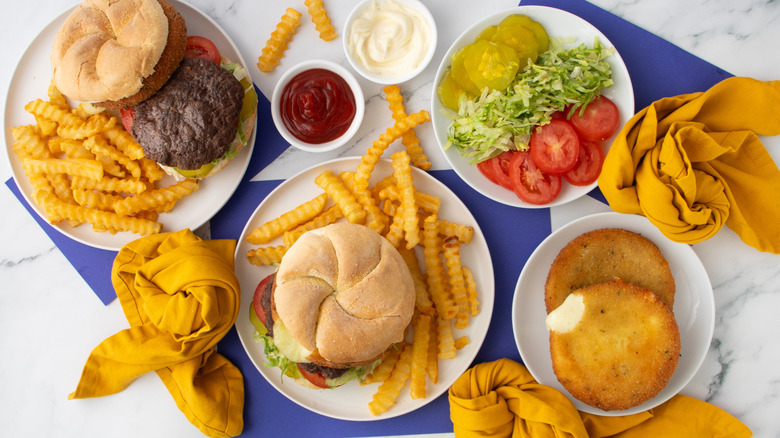
Ingredients
- For the curd burgers
- 16 ounces cheddar cheese curds
- ½ cup all-purpose flour
- ½ teaspoon salt
- ¼ teaspoon black pepper
- 2 eggs, beaten
- 1 cup Italian-style seasoned breadcrumbs
- Vegetable oil, for frying
- For the hamburgers
- 16 ounces ground beef, divided into 4 even balls
- ½ teaspoon salt
- ¼ teaspoon black pepper
- 2 teaspoons vegetable oil
- To assemble
- 4 Kaiser-style burger buns, split
- ½ cup mayonnaise
- 12 dill pickle chips
- 2 cups shredded iceberg lettuce
- 2 Roma tomatoes, sliced
Directions
- Place 4 (4-inch) ring molds on a wax paper-lined baking sheet.
- Divide the cheese curds into 4 (4-ounce) portions.
- Working with one portion at a time, place the curds in a microwave-safe bowl, and warm in 30-second intervals until the curds are mostly melted.
- Pour or spoon the melted curds into one of the molds and spread them out evenly. Repeat with the remaining curds.
- Once all the molds are filled, cover the baking sheet with plastic wrap, and freeze for 1 hour to firm.
- While the curds are firming, set up your breading station by placing the flour in a shallow bowl. Season the flour with salt and pepper.
- Place the eggs in another shallow bowl.
- Place the seasoned breadcrumbs in a third shallow bowl.
- Remove the curd patties from the molds and, working in batches, coat them in the seasoned flour, shaking off any excess.
- Dip the curds into the beaten egg, letting any excess drip off.
- Coat the curds in the breadcrumbs, using your hands to press and adhere the crumbs. Repeat the breading process a second time for each curd patty (double-breading each).
- Once all the curd patties have been breaded, set them aside.
- Fill a large skillet ⅓ full with oil and bring it to 350 F to 375 F over medium-high heat.
- Once hot, work in batches to fry the curd patties until golden brown, about 2 minutes per side.
- Set the fried patties aside on a paper towel-lined plate to drain while you cook the burgers.
- Season the burger balls with salt and pepper.
- Heat oil in a large skillet over medium-high heat.
- Once hot, add the burger balls, and sear for 2 minutes.
- Using a spatula, flatten the burgers into patties, and sear for 1 minute more.
- Flip the burgers and continue to cook for 3 minutes or until cooked through.
- To assemble the burgers, spread mayonnaise over the split buns.
- Divide the pickles, shredded lettuce, and tomato slices between the bottom buns.
- Top the veggies with a cooked hamburger patty.
- Top the hamburger patty with a fried curd patty.
- Cap the burgers with the top buns before serving.
Nutrition
| Calories per Serving | 1,804 |
| Total Fat | 152.3 g |
| Saturated Fat | 21.7 g |
| Trans Fat | 2.1 g |
| Cholesterol | 191.0 mg |
| Total Carbohydrates | 64.6 g |
| Dietary Fiber | 5.3 g |
| Total Sugars | 11.6 g |
| Sodium | 2,627.3 mg |
| Protein | 45.9 g |
What are tips for making CurderBurgers?
Making a cheese curd patty might not be as familiar to everyone as frying up a burger, so Watkins offers some advice. For starters, depending on where you live, you might find it hard to source the curds. Watkins ended up purchasing them on Amazon, though she wasn't able to track down yellow cheddar curds like Culver's uses. Nevertheless, as long as you get curds, you're fine — regular cheddar doesn't work. "Cheese curds are fresh cheeses that are specifically prepared in a way to maintain their firmness/'squeakiness' when cooked. They have a lower melting point than your regular cheddar, which makes them hold up really well to frying." You'll get a very different result if you use ordinary cheddar, and, in Watkins' words, "You're just gonna make a mess."
Meanwhile, the double-breading step is another key to your success. "This will help keep the integrity of the patty in place without too much cheese oozing out," Watkins notes. As for frying the patties, it's important to wait till the oil is hot hot hot to ensure they crisp up properly. "Babysit these patties when they are in the hot oil and keep an eye on them if they start to balloon (that means your cheese curds have hit max melt and will begin to ooze out of their protective coating)," she warns. If the curd patties cool down too much before you're ready to serve them, just warm them up in the oven for a few minutes between 350 F and 400 F.
What Culver's specifics are important for an accurate copycat version?
Culver's CurderBurger is one of a kind, so to recreate it as closely as possible Watkins did some research into exactly the method that the chain uses. Watkins comments that Culver's uses yellow cheddar cheese curds, so if possible, use those. "If not, I used white cheddar cheese curds and the results were very very similar," she says. The chain's curd patties stack neatly inside the burger buns. To achieve the same look, Watkins notes, "I found that my collection of 4-inch round molds works really well to achieve that shape (you can find these molds on Amazon too — look for English muffin molds)."
Meanwhile, the beef patties are straightforward. "Culver's burgers are seared and smashed and lightly seasoned with just salt and pepper," Watkins describes. The chain does step outside the box by using Kaiser rolls instead of ordinary burger buns. "Traditional Kaiser rolls are pretty bready (larger and more dense than your standard burger bun), which I found held up under the weight of the curd patty and burger patty," Watkins explains. If you're opting for a classic bun, she recommends choosing one that is a bit sturdier than average, given the bulk of the CurderBurger.
